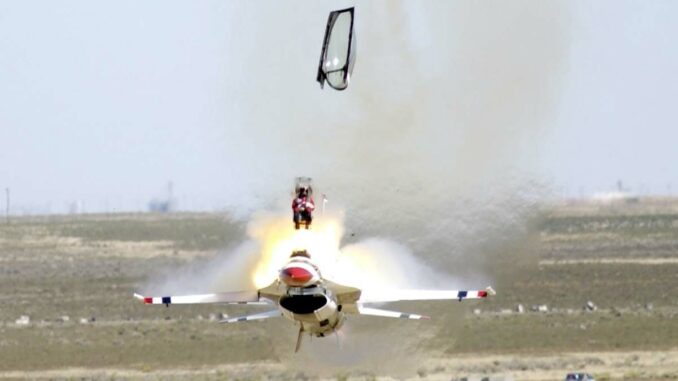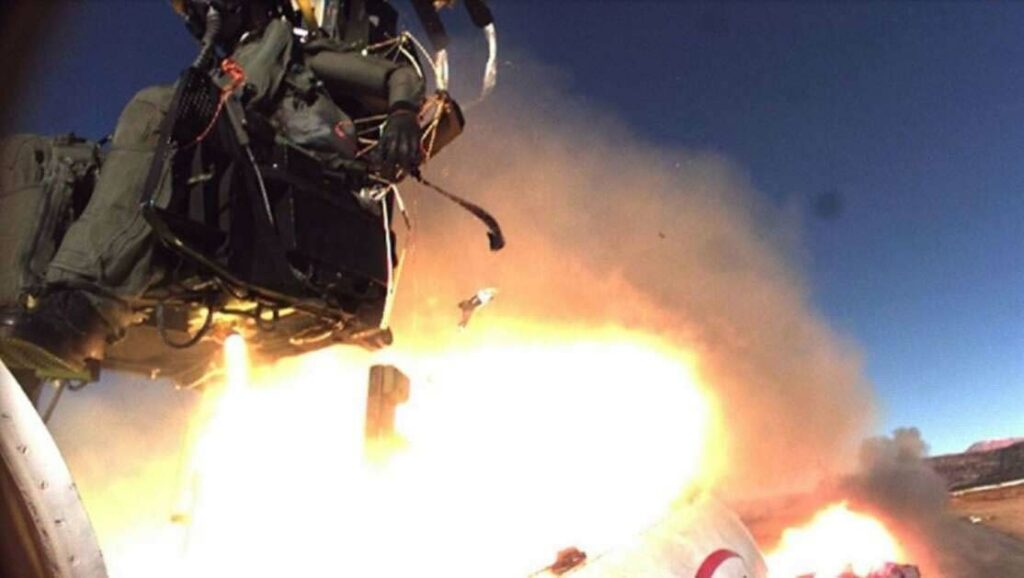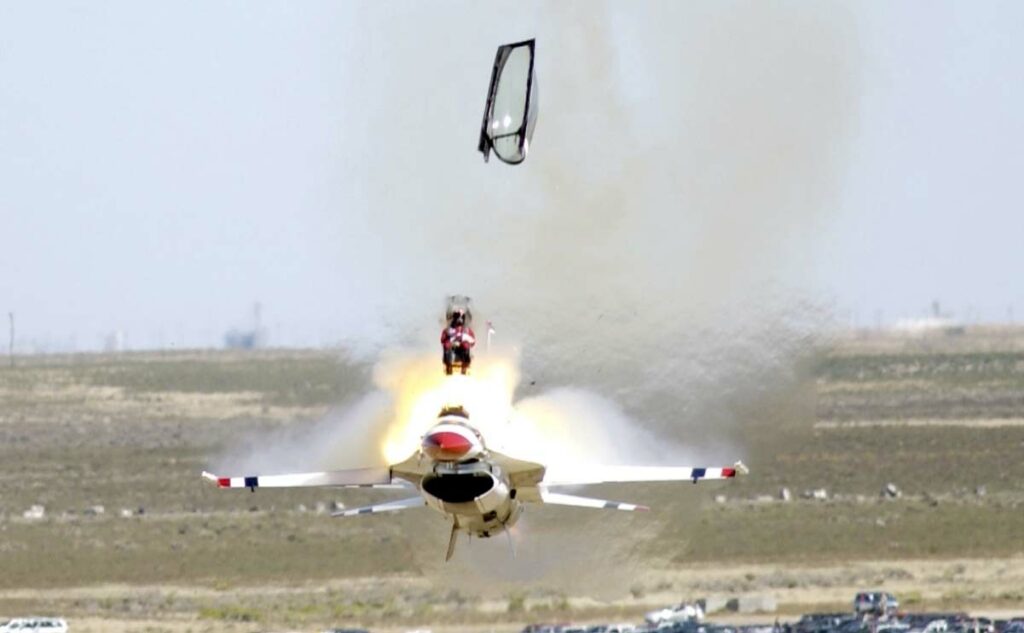
Ejecting a fighter pilot is a dramatic and ultimate act, used only in situations of extreme distress. Although this procedure is designed to save pilots’ lives, it carries significant risks and potentially serious effects on the body. This article explores in detail the ejection process, its effects on the pilot’s body and why this maneuver is so dangerous.

The ejection mechanism: a complex survival technology
Ejection is a sophisticated mechanical and pyrotechnical process. When a pilot makes the difficult decision to eject, he activates a system that launches his seat out of the aircraft at extraordinary speed and force. This mechanism involves the use of explosives to propel the seat and pilot away from the aircraft.
Ejection initiation
The pilot triggers ejection by pulling a handle, usually located between his legs or above his head. This activates a rapid, automatic sequence:
- Cockpit opening: explosive charges shatter the canopy at sufficient speed to allow the seat to pass through.
- Seat propulsion: Rockets under the seat are activated, ejecting the pilot and seat from the aircraft.
- Seat separation and parachute deployment: Once at a safe altitude and speed, the seat separates from the pilot, and a parachute deploys for a controlled descent. Effects on the pilot’s body
Ejection is an intense and potentially traumatic experience for the human body, subject to multiple forces and stresses.
G-forces and potential injuries
During ejection, the pilot is subjected to extreme acceleration, up to 20 G or more, in fractions of a second. This immense force can cause injuries including:
- Spinal fractures: Vertical forces can compress the spine, resulting in fractures.
- Head injuries: The helmet may strike parts of the cockpit during ejection.
- Limb injuries: Arms and legs can be injured if not positioned correctly. Risks associated with altitude and speed
Ejecting at high altitude or speed entails additional risks:
- Hypoxia: At high altitudes, insufficient oxygen can cause hypoxia.
- Barotrauma: Rapid changes in pressure can affect the ears and sinuses.
- Extreme temperatures: Low temperatures at high altitude can cause hypothermia. Stress and psychological reactions
Beyond the physical risks, ejection is a psychologically traumatic experience, which can lead to post-traumatic stress.
Why is ejection so dangerous?
Despite technological advances, ejection remains a high-risk maneuver due to a number of factors:
Unpredictable environmental variables
The condition of the aircraft, weather conditions and the terrain below can greatly influence the outcome of ejection. For example, ejecting over water or mountainous terrain presents additional survival challenges.
Limits of ejection technology
Although ejection technology has evolved, it is not infallible. Failures can occur in the ejection mechanism or in parachute deployment.
Severe physiological impact
The sudden impact on the body, particularly on the spinal column and musculoskeletal system, can have lasting or even permanent consequences.
Equipment-related risks
Helmets, oxygen and other equipment can become hazards in themselves during an ejection, especially if the pilot loses consciousness.
Pilot preparation and training
To minimize risks, pilots undergo rigorous training, which includes :
- Ejection training: Pilots learn ejection procedures and how to position their bodies to reduce the risk of injury.
- Stress and survival training: Pilots are prepared to handle intense stress and survive hostile conditions after ejection. Long-term consequences
Pilots who have had to eject may face long-term challenges, such as :
- Physical rehabilitation: Recovery from ejection-related injuries may take time and require intensive rehabilitation.
- Psychological impact: Emotional and psychological after-effects can affect pilots’ ability to return to flight or resume a normal life.

Ejection from a fighter cockpit is an extraordinary survival maneuver, but it is also one of the most perilous and traumatic for a pilot. Understanding the risks and effects of this procedure highlights the bravery and resilience of fighter pilots. It also underlines the importance of ongoing training, technological advances and the support needed to ensure the safety and well-being of these aerial professionals. Despite its danger, ejection remains an essential component of survival in critical situations, testifying to the extraordinary interconnection between human and machine in modern military aviation.
War Wings Daily is an independant magazine.